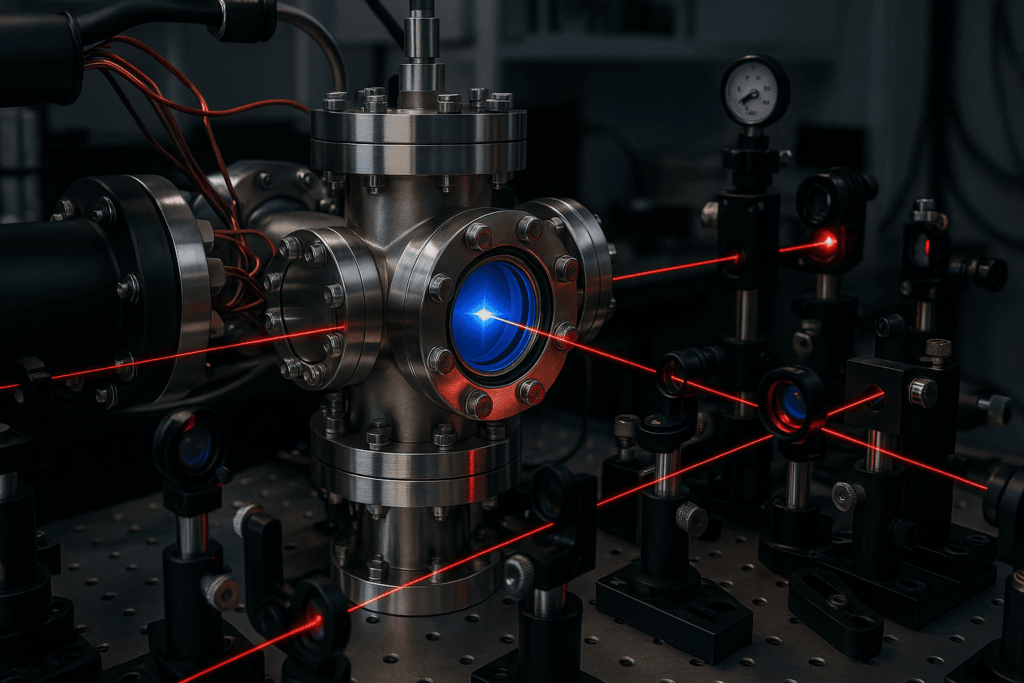Guest Post by Shaurya Agrawal
Just recently the quantum community has been buzzing about a new, ideal qubit platform with cheap manufacturing costs. This new technology was developed by a team at DOE’s Argonne National Laboratory and published in Nature.
This ideal platform from the Argonne National Laboratory is mentioned to have promising results and a novel, yet simple approach to creating and using qubits in a scalable, cheap, and effective manner.
Argonne mentions how they are aware of the various qubit technologies that are being aggressively pursued by various large tech corporations and mention how their goal is not to compete with those technologies but rather just to develop the ideal platform that can advance the field of quantum computing.

Issues the technology aims to solve
This qubit platform aims to solve 3 problems that Argonne claims are crucial for the development of more robust quantum technologies.
The first is coherence, the long-sought property to make qubits and in turn quantum computers much more reliable and capable of scalability. Coherence is how long a qubit is capable of staying in sensitive states such as superposition. This requires qubits to be robust enough to not respond to outside interference and disturbances that might collapse the state of the qubit. Argonne mentions ideally the qubit would have a coherence time of “around a second, a time step that we can perceive on a home clock in our daily life.”
The second requirement for the ideal qubit is to be able to transfer from one state to another in a short amount of time or essentially the operations on qubit such as through various gates to occur quickly. This is quite important as the qubit operation time should be short while the coherence time is long in order to perform operations on qubits before they lose their state. Thus, if operation times are sufficiently short and coherence times are sufficiently long, then these qubits are viable options to be used in circuits that perform intensive operations.
The third requirement is entanglement to occur easily between qubits. Entanglement is a crucial building block of several algorithms and Bell states are crucial for quantum internet protocols.
How does it work?
Keeping these three requirements in mind, the robust new qubit technology that the DOE developed used electrons as their qubit choice. This was due to their abundance, which results in easy and cheap access to their qubits.
Due to environmental noise, decoherence and information loss are prevalent in qubits. They are a huge problem as mentioned previously. Thus, to protect electrons from surrounding environments, the electrons were trapped on an ultrapure solid neon surface in a vacuum
This solid neon was acquired by cooling down neon to around 10-20 Kelvin, and solid neon is used due to inertness as a noble gas with a full valence shell. Solid neon is the perfect host to protect a qubit in a vacuum, due to this inertness.
To perform an effective measurement on the qubit, a chip-scale microwave resonator made out of superconducting material was used. This type of technology where a photon is coupled with an electron in a near-vacuum state was the first of its kind and provides promise for using photons to control qubits. In turn, issues like the wiring problem, qubit connectivity, and error loss during measurement could all be remediated allowing for better scalability of these quantum computers.
Results and promise of this qubit platform
After running real-time gate operations on this new platform in a dilution refrigerator, the team was able to gain promising results.
The neon trap provided robust protection to the qubit from noise and the coherence times achieved were competitive with cutting-edge qubit platforms. The team mentioned how their qubits were as good as the ones being used for the past 20 years.
Even without any optimization of coherence times or any protocols such as error mitigation being implemented the platform was able to achieve remarkable results, thus there is quite a lot of promise for this new technology.
Not only is this technology a huge step into the future of error-free quantum computing, but it is a huge step forward to affordable and scalable quantum computing. Due to the simplicity of the platform and abundance of electrons, the manufacturing costs are also quite low giving us a cheap yet efficient new qubit.
Source: Argonne and Published Paper
A little bit about our guest poster Shaurya Agrawal
I am a high schooler originally from Mumbai, India now living in the great state of Illinois. After moving here, in 3rd grade, I wanted to explore new, interesting fields in science and since I live next to Argonne, Fermilab and UChicago I got involved with quantum. Soon, I discovered quantum computing, and I was hooked as this was a way to use this abstract field to make a tangible impact. I want to help make this complex and novel field navigable for passionate youth and the general public like me.
If you found this article to be informative, you can explore more current quantum news here, exclusives, interviews, and podcasts.
















